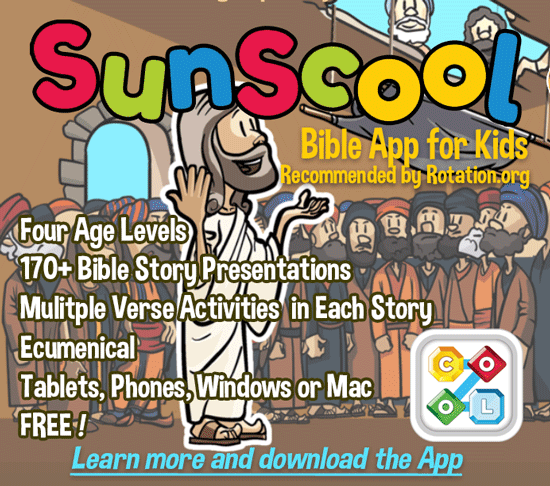Nehemiah - Bible background
...Moved here to consolidate...
Key verse:
"Do not be grieved, for the joy of the Lord is your strength." (Neh. 8:10b)
Introduction
Nehemiah & Ezra Connection:
To fully understand Nehemiah's mission, it seems necessary to back up to Ezra. Biblical scholars state Ezra and Nehemiah were not contemporaries, as their missions, though similar, were several years apart. However, Ezra does make some appearances in Nehemiah, so we'll take a look at his mission first.
Timeline
Dateline 538 B.C. Cyrus, king of Persia, was 'stirred by the spirit of God' to make a proclamation that the exiles should return to Jerusalem to rebuild the temple. Extensive lists of the exiles are given, in part to show who was legitimately an exile and to prove their ancestry.
Work on the restoration had been going on about two years when trouble started. Adversaries of the tribes of Judah and Benjamin approached Zerubabbel and Jeshua, who were leading the rebuilding project. They tried to invite themselves along as helpers, but were soundly turned down. (Ezra 4). They based their offer on the fact they worshiped the same God. They may have thought the decree was exclusively for the exiles and that those Jews who remained were not included. Openly offended, the opponents did whatever they could to discourage the building. Intimidation and bribes to local officials put a halt to the project, from the end of Cyrus' reign through King Darius' reign.
The return to Jerusalem was similar to the Exodus:
The king gave permission for the people to leave;
the "survivors" indicate a theological connotation of "remnant" (1 Chronicles 13:2)
supported by non-Jewish neighbors
voluntary offerings included with other financial aid.
Some of the returnees could not verify their genealogy and were banned from the Temple as unclean until a priest could consult with the Urim and Thummim. (Ezra 2:61-63)
Adversaries to any major event seem to need proof of authority, and it was no different here. King Darius reaffirms King Cyrus' decree to rebuild the Temple and orders work to resume. Still not satisfied, letters to King Artaxerxes defaming the exiles were sent, intimating a possible threat to the King if work continues. King Artaxerxes replies that their accusations could be true and orders work to stop.
Prophets Haggai & Zechariah
It is now 520 B.C. Past problems in the kingdom have calmed down, and now is a good time for major projects to be done. Enter the prophets Haggai and Zechariah. They prophesied to the Jews and through Zerubbabel and Jeshua, and were able to get the work on the Temple going again. Once again, more opposition! Letters are sent to King Darius from the Trans-Euphrates governor demanding to know where the authority to build the Temple comes from. The letter stated that the Jews had been questioned and they answered that the project was being done at God's direction. A search of the records to confirm their answer was demanded. A thorough search of the records revealed a scroll that read, almost verbatim to the Jews' response. The rebuilding would resume! The Temple was completed in the sixth year of Darius' reign with great joy and a celebration of the Passover. It had been 72 years since the first Temple had been destroyed.
Ezra
Approximately 58 years later, King Artaxerxes sends Ezra to Jerusalem. 'Ezra was a teacher well versed in the Law of Moses, which the LORD, the God of Israel, has given'. (Ezra 7:1-6, NIV). Ezra's mission was to deliver gifts from Persian authorities to the people and the Temple; inquire as to the conformity to the Law in Judah and Jerusalem, and appoint judges and magistrates to teach the law. Within the first year, Ezra led people in public confession of sin and ended intermarriage.
Ezra had three responsibilities: study the law, live it and teach it to the people. He mourned Israel's lack of faithfulness to the law, which included intermarriage. In order to 'purify' the Isralites, the foreign wives and children had to be sent away. Only about one-half of one percent of the population complied with the divorces, but it continued to be a problem for Nehemiah as well.
Another stiff requirement of Israel was they had to assemble in Jerusalem within three days or forfeit all their property. If they don't they will be banned from the congregation of the exiles.
Nehemiah
While Ezra's mission was to rebuild the Temple, Nehemiah's was to rebuild the city wall. By doing so, he would also have to expand the population of Jerusalem, correct social abuses, support the worship life of the community, and guard against foreign marriages. The dedication of the new wall took place during his first year in Jerusalem.
When Nehemiah arrived in Jerusalem, he wanted to inspect the walls, and did so at night. He borrowed a donkey and carefully inspected it, but the destruction was so bad in some places the road was impassable. He was devastated at the sight of the broken walls and burned gates. Some scholars believe some of the destruction could have happened while work had been stopped.
Nehemiah made several requests to King Artaxerxes 1: to return to the city of his ancestors (note he did not say Jerusalem, to avoid the King's anger), asked for travel documents to insure his safety; he needed "purchase orders" to obtain the necessary wood and other building supplies, and set a time frame for his absence. (The Scriptures do not specify what that was). Nehemiah was the king's wine steward, so it was understandable the king wanted to know how long he would be gone. Imagine - he worked as the king's chief wine steward, but now he will be the governor of Jerusalem!
Even before he arrives, opposition to rebuilding the wall is beginning. He had not told anyone what he was doing, but once it was known, the people jumped on the project. Whenever he encountered opposition he stood up to it, always claiming God's role in the mission.
Opposition mounts
When Sanballat the Horonite, one of the locals, heard about the rebuilding, he ridiculed the Jews. "What are those feeble Jews doing? Will they restore their wall? Will they offer sacrifices? Will they finish in a day? Can they bring the stones back to life from those heaps of rubble - burned as they are?" (Neh. 4:1-2). Nehemiah prays for vengeance against their enemies; that an enemy of the project is an enemy of God.
After work had been going on some time, Judah tells Nehemiah the strength of the people is fading. The people living near the border of Judah fear enemy attacks and want the people working on the wall to come home to protect them. Nehemiah responds by telling the people to carry their supplies in one hand and their weapon in the other. They were protected - always on guard, always armed.
Nehemiah saw the attacks of Sanballat and his allies as a direct threat to God's plans for Israel. That, too, could be a dangerous attitude, often abused in the course of history when people consider all their opponents as ipso facto enemies of God. But there are, indeed, times when hostility is directed not only against us as a people, but against us as God's people; it is designed to thwart God's purposes. (New Int. Bible, page 777)
Even though work on the wall is progressing well, financial problems are beginning. The wall workers left a shortage of field hands, making it difficult for the women to bring in the harvest. Turning to their families for help, they were often cheated by high interest on loans, and their children were being sold into slavery. Nehemiah quickly stopped that practice.
It's been 52 days, the wall is now completed, and repopulation of the city begins. the people have repented of their sinful ways and are now ready to be a worshiping, God-fearing community.
At the dedication, Ezra is asked to read the Scriptures. He went to a high platform built just for the occasion and began to read the Law. It had been so long since the Scriptures have been read, the people had forgotten what was in them. When they heard the reading, they were moved to tears. The Levites were standing by, also reading the law to the people and teaching them. "Do not be grieved, for the joy of the Lord is your strength." (Neh. 8:10b) Usually only available to men, this public reading of Scripture was for everyone - men, women and children - anyone who could understand. Two things were learned from this reading:
(1) understanding of the Word leads to obedience, and
(2) Obedience leads to great joy.
Being followers of God won't be without its challenges, but by relying on God's Word, we become stronger.
Objectives/Key Ideas
- God is ready to forgive and rebuild people's lives
- We must keep God's word or we might forget it
- God is faithful to each generation, even when there are problems, wars and destruction,
- God can raise up leaders when they don't seem easy to find, Even wine stewards! (Neil MacQueen)
Sources:
- The New Interpreter's Bible, Vol. III, 1999, Abingdon Press, Nashville, Tennessee. Pages 720, 777.
- The New Oxford Annotated Bible, Revised Standard Version. 1977, Oxford University Press.
Written by rotation.org member Julie Burton
A representative of Rotation.org reformatted this post to improve readability.




